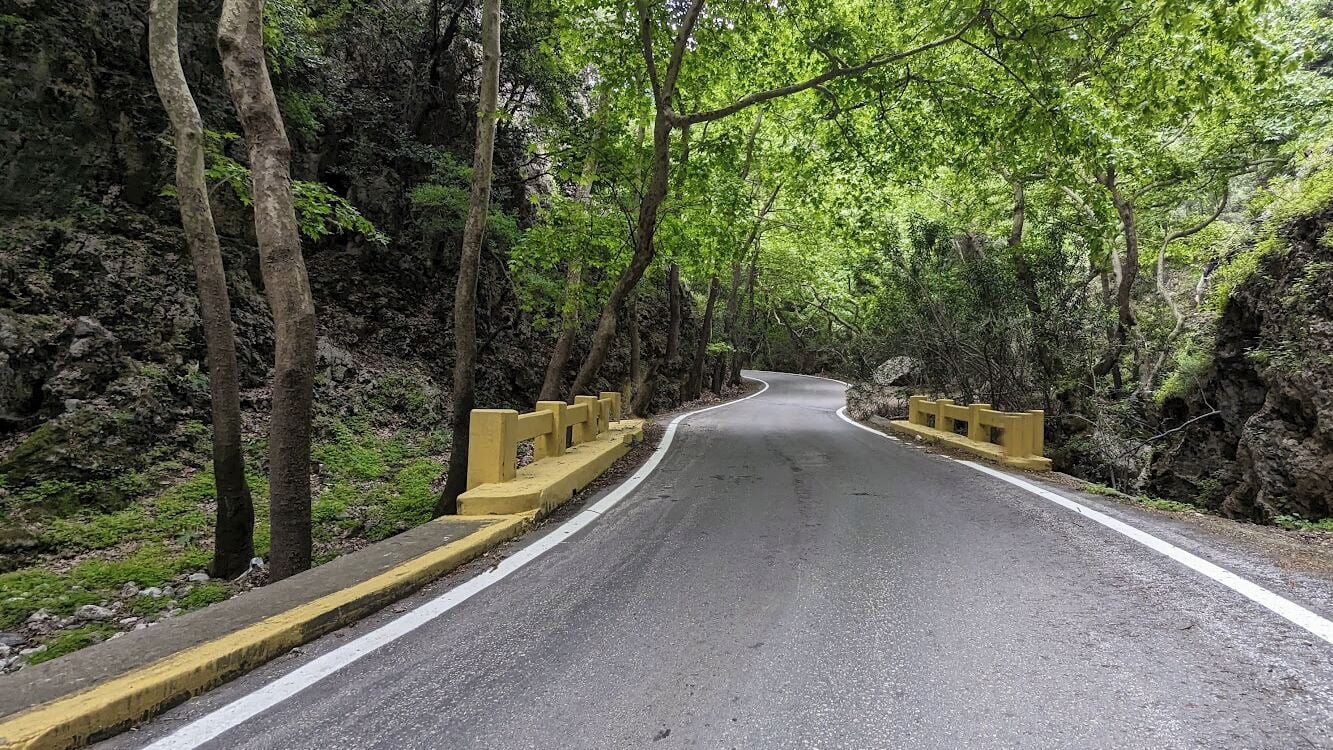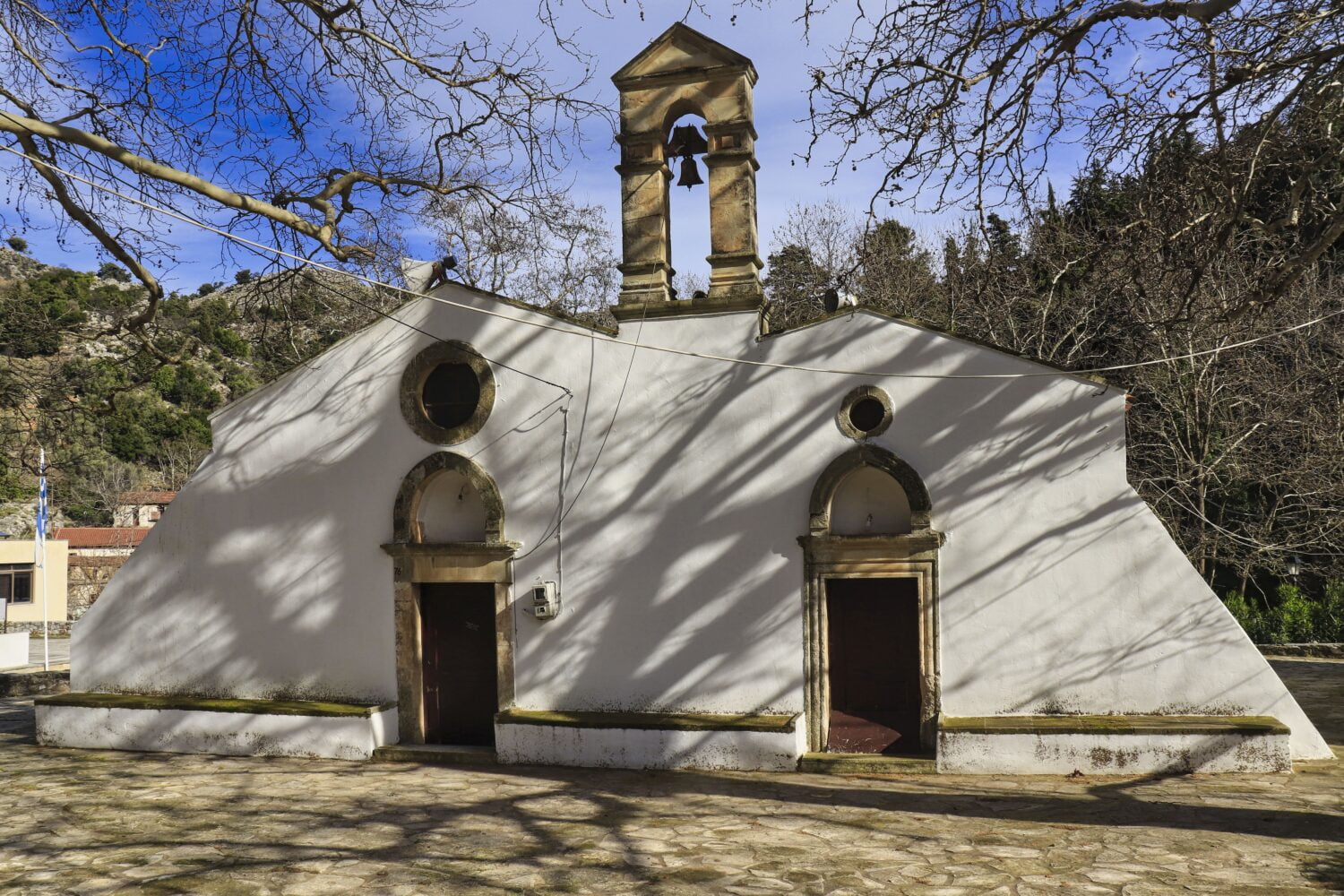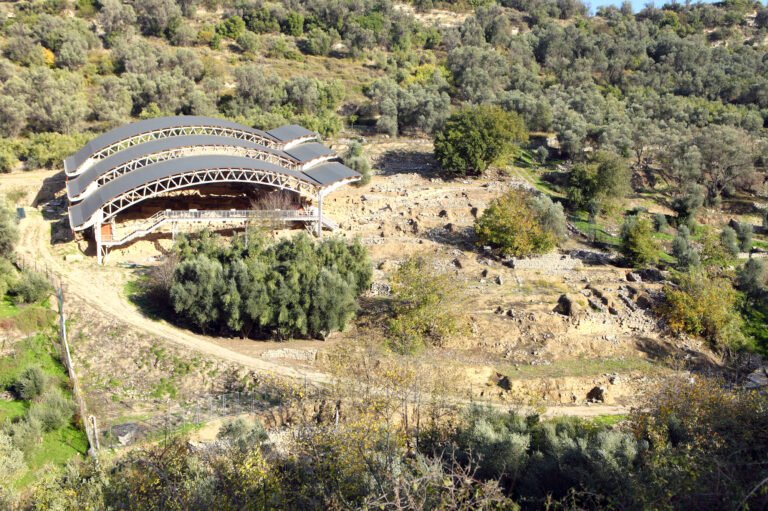Therisso Revealed: Crete’s Historic Village and Gorge at the Crossroads of Freedom
Nestled in the embrace of the White Mountains (Lefka Ori) on the island of Crete, the village and gorge of Therisso serve as silent witnesses to the tumultuous history and breathtaking landscapes that define this part of Greece. This article delves into the geography, history, and cultural significance of Therisso, highlighting its pivotal role in the struggle for Cretan independence and its enduring legacy in the modern era.
Geographic Overview
Therisso is situated approximately 15 kilometres south of Chania, in a region renowned for its natural beauty and rich biodiversity. The village is perched at an elevation that offers panoramic views of the surrounding mountains, making it a picturesque settlement that captivates visitors with its serene atmosphere and verdant landscapes.
The Therisso Gorge formed millions of years ago carved a dramatic path through the mountains. Stretching over 6 kilometres, it is a natural masterpiece that attracts hikers, nature enthusiasts, and those seeking to immerse themselves in the tranquillity of the Cretan wilderness. The gorge is part of the European walking route E4, offering a challenging yet rewarding experience for those who traverse its length.

Historical Significance
The history of Therisso is inextricably linked with the struggle for Cretan independence. In the late 19th and early 20th centuries, Crete was a focal point of conflict and political manoeuvring as the Cretan people sought to liberate themselves from Ottoman rule and unite with the Kingdom of Greece.
The Therisso Revolt (1905)
The village of Therisso played a central role in this struggle, most notably during the Therisso Revolt of 1905. This uprising was led by Eleftherios Venizelos, a figure who would later emerge as one of Greece’s most influential politicians. Venizelos and a group of armed revolutionaries declared the autonomous Cretan State in Therisso, challenging both the Ottoman Empire and the Great Powers that had a vested interest in the region’s status quo.
The revolt was a turning point in Cretan history, as it galvanised support for the unionist cause across the island and among the Greek diaspora. The insurgents’ headquarters were established in Therisso, making the village the de facto centre of resistance against the Ottoman forces and the international community’s reluctance to support Cretan’s unification with Greece.

The Path to Union with Greece
The events that unfolded in and around Therisso had far-reaching implications for Crete and its relationship with the broader Greek nation. The resolve and determination displayed by Venizelos and his compatriots in Therisso eventually led to establishing an autonomous Cretan State under the suzerainty of the Ottoman Empire, but with significant self-governing rights.
This autonomy, however, was merely a stepping stone toward the ultimate goal of enosis (union) with Greece. The Therisso Revolt, through its bold assertion of Cretan identity and sovereignty, laid the groundwork for the subsequent political manoeuvres that would finally result in the island’s formal union with Greece in 1913, following the Balkan Wars.
The Cretan Stamps: A Philatelic Legacy
Indeed, an intriguing aspect of Therisso’s historical narrative is its connection to the unique philatelic history of Crete. During the period of autonomy and the subsequent revolutionary activities, Crete issued its own stamps, a tangible symbol of its emerging national identity and sovereignty. This initiative was part of the broader efforts to establish a distinct Cretan state and assert its administrative and cultural independence from the Ottoman Empire.
The issuance of Cretan stamps, particularly during the Therisso Revolt (1905) era, represents a significant chapter in the island’s struggle for recognition and unity with Greece. These stamps are valuable collectables for philatelists and historical artefacts that offer insights into Crete’s political and social climate during this tumultuous period.

Cultural and Natural Heritage
Today, Therisso is not only remembered for its historical significance but also celebrated for its cultural and natural heritage. The village has preserved much of its traditional Cretan architecture, with stone houses and narrow streets that evoke the spirit of a bygone era. The local cuisine reflects the region’s rich agricultural bounty, with tavernas serving dishes made from locally sourced ingredients.
Meanwhile, the Therisso Gorge remains a testament to the timeless beauty of Crete’s natural landscape. Its flora and fauna are representative of the island’s biodiversity, offering a sanctuary for endemic species and a haven for environmental preservation.
Legacy and Modern Significance
The legacy of Therisso and its role in the struggle for freedom continue to resonate in the collective memory of the Cretan people and the broader Greek nation. The village symbolises resistance, a place where the ideals of liberty and self-determination were fiercely defended against external domination.
In contemporary times, Therisso attracts visitors for its historical and cultural significance and natural beauty. It serves as a starting point for exploring the broader region of Chania and the majestic landscapes of the White Mountains.

Conclusion
The village and gorge of Therisso stand as enduring monuments to the resilience and courage of the Cretan people. Their story is a vivid chapter in the larger narrative of Greece’s quest for national unity and sovereignty. Therisso’s historical legacy, coupled with its natural and cultural treasures, makes it a unique destination that offers insights into the soul of Crete and the indomitable spirit of its inhabitants.
In reflecting on the saga of Therisso, one is reminded of the profound connections between place, identity, and history. The village and gorge are not merely geographical locations but symbols of the struggle for freedom and the enduring quest for belonging within the broader tapestry of Greek and Cretan heritage.
Table of Contents
Views: 97







